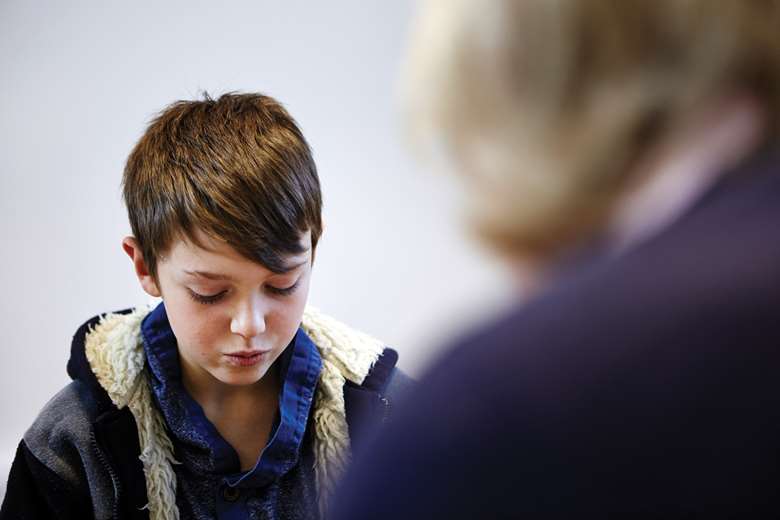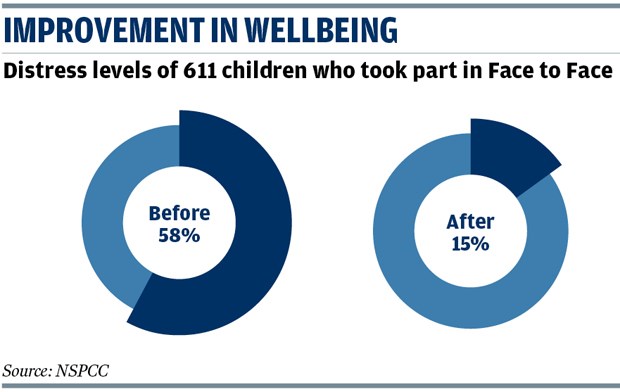How one-to-one approach supports children to confront problems
Emily Rogers
Tuesday, August 18, 2015
Face-to-face sessions improve the emotional wellbeing of children in care or on the edge of care.

Project
Face to Face
Funding
Around £1,000 per child, funded by the NSPCC
Background
Research shows children in care are up to four times more likely to have a mental health disorder than their peers – a trend the NSPCC is keen to tackle head on.
The charity has been delivering its Face to Face programme since 2011, which was devised based on feedback from looked-after children who were asked what type of service would really help them deal with challenges in their lives. The result was this confidential, short-term, face-to-face programme, which this year ran in 18 areas: Birmingham, Bristol, Croydon, east London, Foyle, Gillingham, Grimsby, Hull, Liverpool, Middlesbrough, Nottingham, Peterborough, Prestatyn, Sheffield, Southampton, Stoke-on-Trent, Swansea and Warrington.
Face to Face was accessed by 1,354 children and young people between 2011 and March 2015 and is continuing in some areas until next March. The charity published interim findings last year and has since produced a full evaluation report. It has also created a free practice toolkit and implementation guide, available online, to help others adopt the approach.
Action
Looked-after children or care leavers aged five to 19 and children up to 18 who are adopted or at risk of entering care can refer themselves to the service. They can also be referred, with their consent, by professionals such as social workers.
The NSPCC practitioner makes contact with the child or young person within 24 hours and a first meeting is held, enabling the young client to talk about the issue he or she wants to tackle. Participants are given up to eight sessions, each lasting around an hour, but can have up to three sets of sessions to work on different issues. They are asked to envisage the positive future they want and work towards getting there, focusing on their skills and strengths, rather than getting stuck on the problem.
Louise Bazalgette, the charity’s development manager for looked-after children, says the service is sometimes the first opportunity for some to talk about their issues and provides a gateway to seeking help from other services. “Some young people simply want to know how to verbalise their feelings. Some say they’re unable to access mental health services because they’re too intimidating. But after Face to Face, they feel able to trust professionals,” she says.
Bazalgette says the programme’s emphasis is on allowing the child or young person to lead the process, as “so much of the experience of being in care can be disempowering”. “There’s often a big focus on the problems in these young people’s lives, and the things that aren’t going well,” she adds. “But Face to Face is about talking to young people about their strengths and how they can build on what’s going well. It enables them to see themselves as resourceful people.”
Outcome
Before Face to Face, 58 per cent of a representative sample of 611 participants had wellbeing scores indicating clinical levels of distress, according to the 40-point Outcome Rating Scale. But by the end, the proportion within this range had fallen to 15 per cent.
Just under 60 per cent of all participants showed a “reliable” improvement of five points or more in their level of wellbeing by the end of the service, according to figures compiled by the charity’s evaluation department and published in June. This was 70 per cent among the 355 participants who started with a clinical level of distress.
Improvements in wellbeing were sustained for 84 per cent of participants three months after they finished the programme, according to follow-up assessments of 103 young people.
Nearly three quarters of participants – 73 per cent – said Face to Face had helped them a lot in solving the immediate concern affecting their wellbeing.

If you think your project is worthy of inclusion, email supporting data to derren.hayes@markallengroup.com




